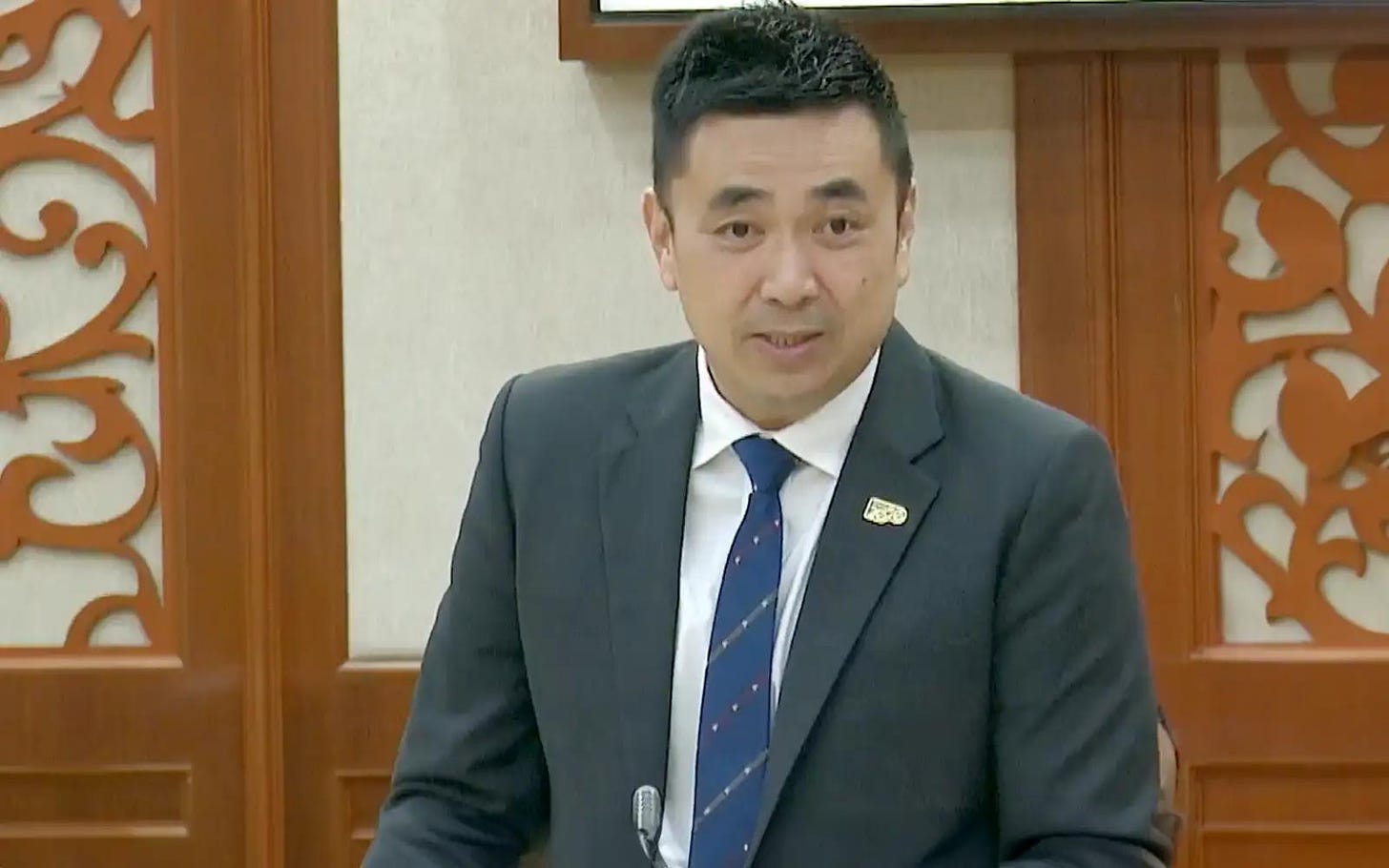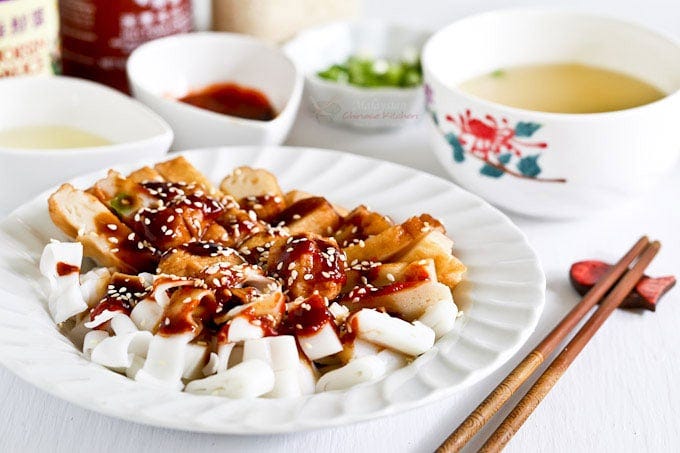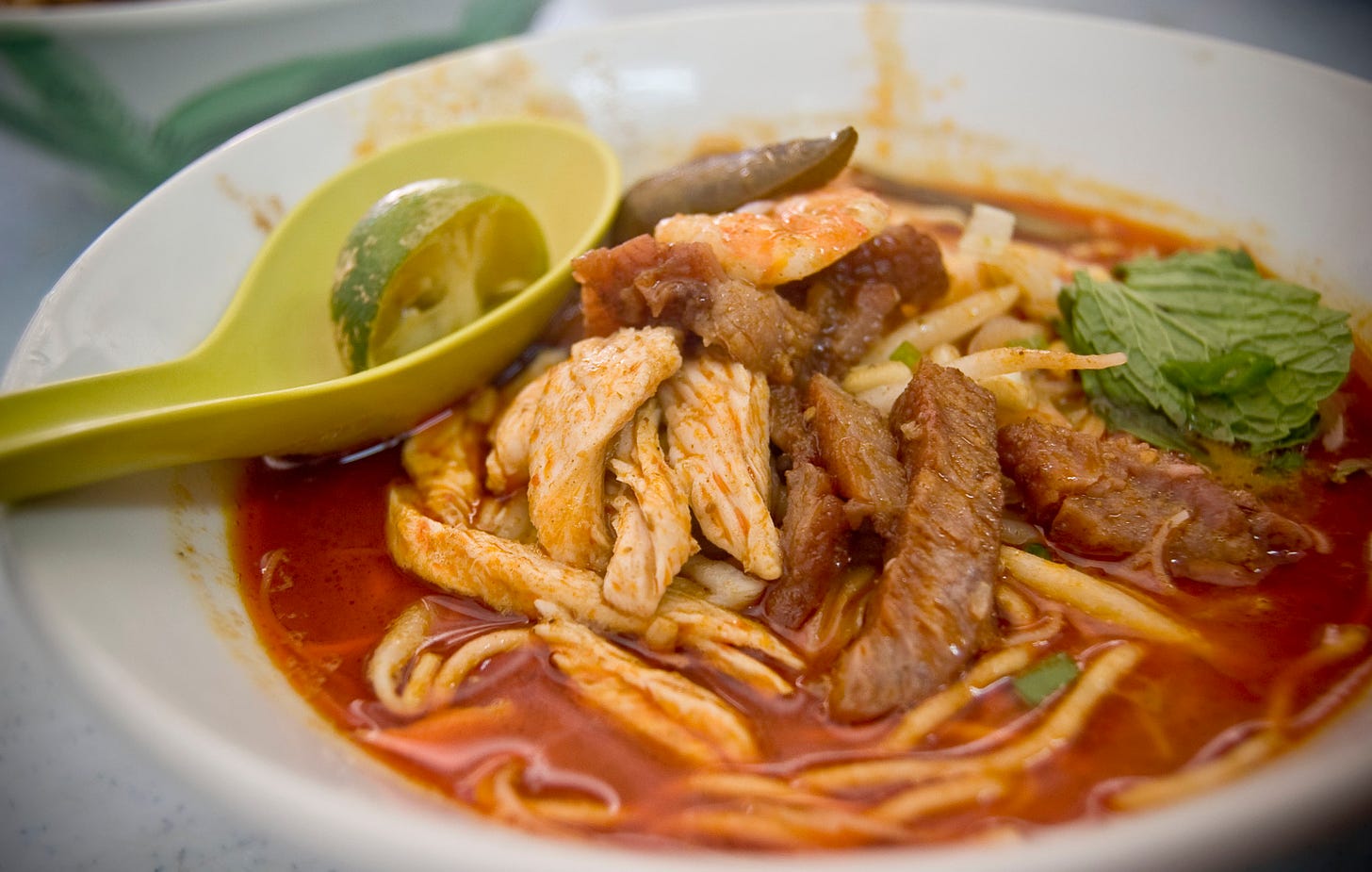
Murray Hunter
Penang’s discriminatory laws on local food preparation
Back in 2016, the Penang government banned foreigners from being the main cooks of local hawker foods in stalls and restaurants. At the time, the former chief minister Lim Guan Eng said the move was to preserve the authenticity of Penang’s local foods. This according to NST was done under the premise that most visitors to Penang would not want to taste food cooked by foreigners.
The Penang Island City Council (MBPP) has recently stated that it would now start vigorously enforcing the ban on 13 local Malaysian dishes in all hawker stalls, food courts, and coffee shops from 2025 onwards.
The dishes included in the ban of using foreign chefs to cook includes nasi Lemak, asam laksa, pasembor, mee sotong, char koay teow, koay teow soup, Hokkien mee, mee curry, watan mee, loh nak, chee cheong fun, char koay kak, and oh Chien.
According to MBPP councillor Tan Soo Siang, as reported by WeirdKaya, the ban comes after several complaints were lodged concerning the decline of quality in local food prepared by foreigners. This is only a partial ban as the directive doesn’t include cafes, restaurants, hotels, and franchises offering the same types of hawker food in their menus.
However, state executive councillor for local government, town and country planning Jason H’ng is reported by NST to be planning to extend the ban on foreign chefs preparing local dishes to preserve the authenticity of Penang’s famous street food. Such action will be taken through municipal councils enacting bylaws.
The Penang Island City Council (MBPP) has recently stated that it would now start vigorously enforcing the ban on 13 local Malaysian dishes in all hawker stalls, food courts, and coffee shops from 2025 onwards.
The dishes included in the ban of using foreign chefs to cook includes nasi Lemak, asam laksa, pasembor, mee sotong, char koay teow, koay teow soup, Hokkien mee, mee curry, watan mee, loh nak, chee cheong fun, char koay kak, and oh Chien.
According to MBPP councillor Tan Soo Siang, as reported by WeirdKaya, the ban comes after several complaints were lodged concerning the decline of quality in local food prepared by foreigners. This is only a partial ban as the directive doesn’t include cafes, restaurants, hotels, and franchises offering the same types of hawker food in their menus.
However, state executive councillor for local government, town and country planning Jason H’ng is reported by NST to be planning to extend the ban on foreign chefs preparing local dishes to preserve the authenticity of Penang’s famous street food. Such action will be taken through municipal councils enacting bylaws.

Jason H’ng: Is this the new breed of DAP leaders?
According to a number of hawkers, such a move is going to restrict their businesses as its very difficult to find local labour to work in hawker stalls, cafes and restaurants. This will force owners to cook, restricting their abilities to manage their businesses. There is no evidence that this move by the government has any ground swell of public opinion behind it.
Unfortunately, when stalls become busier, under pressure from competitors, while rents and costs rise, food standards often decline. Blaming foreign cooks is just the easy way out. There are many quality assurance schemes that could be put in place to maintain food standards that would be more effective.
Perhaps the most disturbing aspect of this new initiative is the race-based discrimination behind it. What makes this even more surprising is that this discrimination comes from the DAP. The DAP has become racist just like its coalition partner UMNO in government. Race based discrimination is not acceptable any where else, except Malaysia. Its sad to see the DAP has not thought this issue through properly and resorted to discriminatory measures as solutions.
If one travels the world, one can see that race and ethnicity has nothing to do with cooking good food. In southern Thailand, Thais prepare good tasting Japanese foods. In Australia, fish and chip shops are owned and run by Chinese, and pizza shops owned and operated by Arabs.
The marketplace is the best mechanism on maintaining the quality of foods.
Finally, one could also argue that the Penang government has arrogantly claimed that watan mee and chee cheong fun originated in Penang.

Chee cheong fun originated in Hong Kong and Guangdong.
Race discrimination is not a solution to anything.
***
kt comments:
One issue which I totally disagree with Murray Hunter, the description of the origin of Penang CCF - What do we mean by 'origin'?
Chee cheong fun (CCF), just like koay teow, mee, mee snua, koay kak, bee thai bak, etc, all originated in China, and not Hong Kong (which politically is also China - but for this discussion let's keep these two different in matters of cuisine).
Chee cheong fun (CCF), just like koay teow, mee, mee snua, koay kak, bee thai bak, etc, all originated in China, and not Hong Kong (which politically is also China - but for this discussion let's keep these two different in matters of cuisine).
But like every food Chinese, the mee, koay teow, mee snua, CCF etc are just basic ingredients, usually made from rice or flour (wheat, maize, millet, etc). How these materials are prepared into food for consumption will in most cases be different from place to place.
This brings us to the prepared Penang CCF that's ready for consumption. Even the CCF prepared in KL, Ipoh etc (let alone Hong Kong or China) is different from the one in Penang. The Penang-styled CCF does NOT (repeat, NOT) have any side-dishes (like yeong Tau Hu, fish-balls, or char siew, etc) - it's just plain CCF, which entices the consumers with its aromatic sauce containing a medley of special-to-Penang's hare-koh, belacan powder, and of course other sauce, sesame oil & roasted sesame seeds, etc.
Thus Penang CCF (the prepared dish ready for consumption) originated in Penang. You won't get the same elsewhere (unless the hawker was from Penang, thus confirming again the CCF a la Penang-style originated in Penang).

Hong Kong during Qing rule was just a barren rocky island with a few fishermen/pirate villages.
ReplyDeleteThe Brits provided the framework to build it up to the Super City that it is today.
Oh-ya, along the way robbed & stripped clean the hinterland resources while keeping the hongkie natives as dog!
DeleteDiscriminatory?
DeleteThen WHY bubbling wine of champagne is champagne & not others?
Real Penang fares have to be prepared by penangites in order to be tagged as Penang foods!